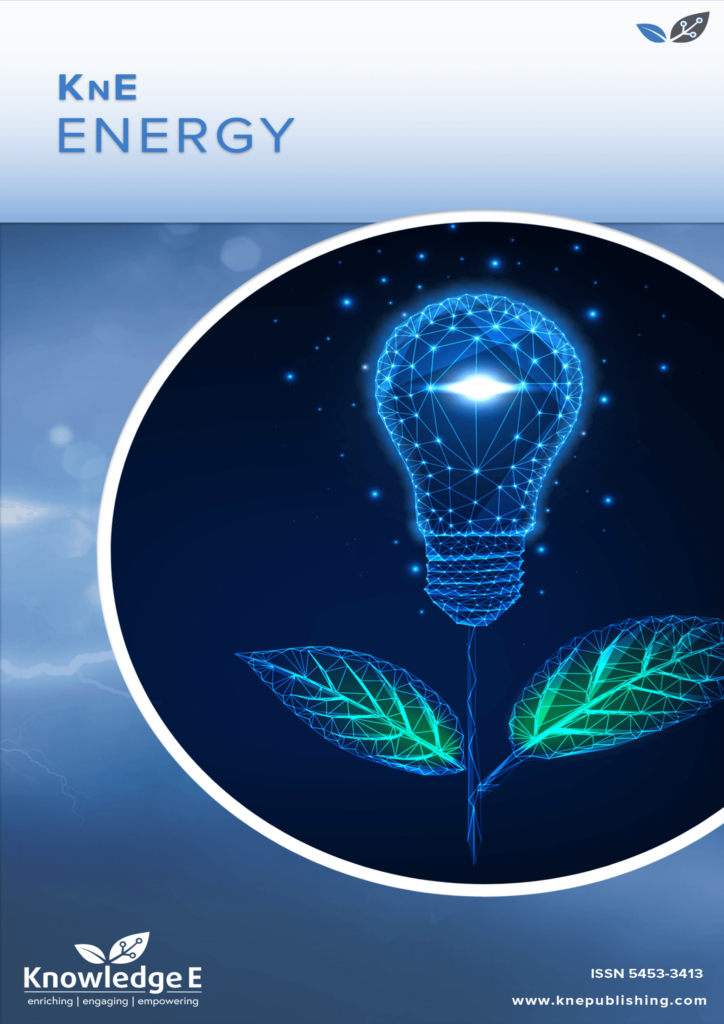
KnE Energy
ISSN: 2413-5453
The latest conference proceedings on energy science, applications and resources
Effect Of -Quenching On Oxidation Resistance Of Zirconium Alloyzrnbmoge For Fuel Cladding Material
Published date: Sep 20 2016
Journal Title: KnE Energy
Issue title: International Conference on Nuclear Energy Technologies and Sciences (2015)
Pages: 6-11
Authors:
Abstract:
Effect of b-quenching of Zr-2.5Nb-0.5Mo-0.1Ge alloy used for advanced fuel cladding material of Pressurized Water Reactor (PWR) was investigated. The aim of this research isto improve the mechanical and corrosion properties through modificationof the alloy with regard to high reactor burn up. The quenching process was conducted by heating the sample at temperature of 950 oCand soaking 2.5 hours,followed by quenching in water at room temperature and then continued with annealing process at 500 and 600oC. The change of hardness and oxidation resistance were characterized using optical microscope and scanning electron microscope (SEM). The effect on the oxidation resistance was investigated by the high temperature oxidation test using the MSB (Magnetic Suspension Balance) at 700 oC for 5 hours. The hardness increased from 217 VHN to 265 VHN after quenching due to grain refinement and precipitation hardening. The oxidation rate followed the typical parabolic growth characteristic. The formation of thin layer was considered to be a stable oxide ZrO2that influenced the oxidation characteristic and increasing the hardness of the alloy.
References:
Hyung Hoon Kim, et.al., “High-temperature Oxidation Behavior of Zircaloy-4 and Zirlo in Steam Ambient”, Journal of Material Science and Technology ( JMST), Vol. 26, Issue 9, pp 827-832 (2010).
[2] GuBeom Jeong, Yong Choi, Sun Ig Hong, “Mechanical Performance of Oxidized Zr-Nb-O Nuclear Cladding Tubes”, Journal of The Physics of Metals and Metallography, Vol. 115, Issue 13, pp 1281-1284 (2014).
[3] Sugondo, “Peningkatan Ketahanan Korosi Zircaloy-4 melalui Pemadu Timah, Tembaga dan Niobium”, Journal Teknologi Bahan Nuklir, Vol. 7, No. 1, Januari (2010).
[4] Yuant Tiando, Posman Manurung, Futichah, “Pengaruh Unsur Pemadu Mo dan Proses FabrikasiTerhadap Kekerasan Plat Zirlo-Mo” JURNAL Teoridan Aplikasi Fisika Vol. 01, No. 01, Januari (2013).
[5] Zhang Jinlong, et.al., “Germanium-containing zirconium-niobium alloy for fuel cladding of nuclear power station”, Patent CN 102925750 A, China (2012).
[6] B. Bandriyana, D. H. Prajitno, A. Dimyati, “Effect of Copper Addition on the High Temperature Oxidation of Zirconium Alloy ZrNbMoGe for Advanced Reactor Fuel Cladding Material”, Advanced Materials Research, Vol 896, pp. 617-620, February (2014).
[7] Hans G. Weidinger,” Fabrication of Zirconium Alloy Cladding Tubes and Other Fuel Assembly Components for Water-Cooled Reactors”, Workshop on Modeling and Quality Control for Advanced and Innovative Fuel Technologies, International Centre of Theoretical Physics, Trieste, 2005.
[8] Tero Manngard, Ali R. Massih, “Modelling and Simulation of Reactor Fuel Claddingunder Loss-of Coolant Accident Conditions”, Journal of NUCLEAR SCIENCE and TECHNOLOGY, Vol. 48, No. 1, p. 39–49 (2011).
[9] Djoko Hadi Prajitno, Influence of β-quenching on The Microstructure and Microhardness of Zr4-Nb Alloys, International Conference on Advances in Nuclear Science and Engineering in Conjunction with LKSTN, 351-354, (2007)
[10] CHAI Lin Jang, LUAN Bai Feng, CHEN Jian Wei, ZHOU Jun, LIU Qing, “Effect of cooling rate on β →α transformation during quenching of a Zr-0.85Sn-0.4Nb-0.4Fe-0.1Cr-0.05Cu alloy” Journal of Science China Technological Sciences, Vol. 55, Issue 10, pp 2960-2964, (2012).
[11] Parikin, Andika Fajar, A.H. Ismoyo, B.Bandriyana, Neutron Diffraction Technique On The Structural Identification of ZrNbMoGe Alloy, Proceedings of The International Conferenceon Materials Science and Technology, ICMST 2010, 91-97, Center for Technology of Nuclear Industry Materials, 2011.
[12] Hyun-Gil Kim, Il-Hyun Kim, Yang-Il Jung, Jeong-Yong Park And Yong-Hwan Jeong, Properties of Zr Alloy Cladding After Simulated Loca Oxidation And Water Quenching, Nuclear Engineering And Technology, Vol.42 No.2 April 2010.
[13] M. Steinbruck, J.Birchley, A. V. Boldyrev, A. V. Goryachv, M. Grosse, T. J. Haste, Z. Hozer, High temperature oxidation and quench behavior of Zircaloy-4 and E110 cladding alloys, Progress in Nuclear Energy 52, 19-36, 2010.
[14] Jong HyukBaek, Ki Bum Park, Yong Hwan Jeong, Oxidation kinetics of Zircaloy-4 and Zr–1Nb– 1Sn–0.1Feat temperatures of 700–1200C, Journal of Nuclear Materials 335 443–456, 2004.
[15] M. Mihalache1, V. Ionescu1, T. Meleg1, M. Pavelescu, Study of Microstructure of Oxidized Zr- 2.5%Nb Subjected To Thermal Transient Treatments from, Journ. Phys., Vol. 56, Nos. 7–8, P. 952–962, Bucharest, 2011